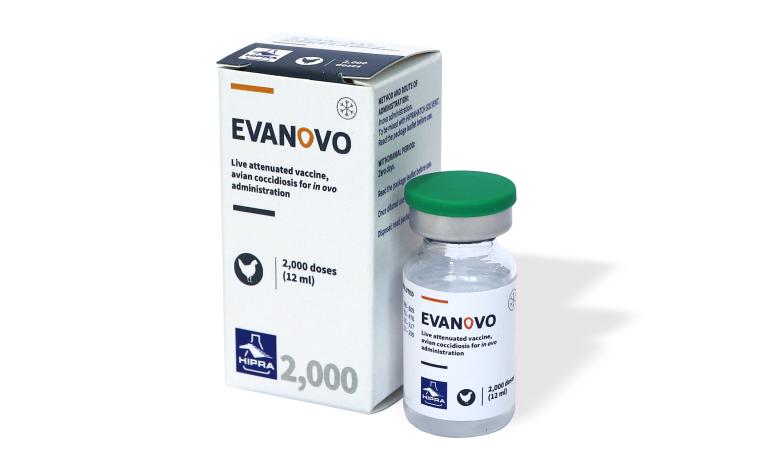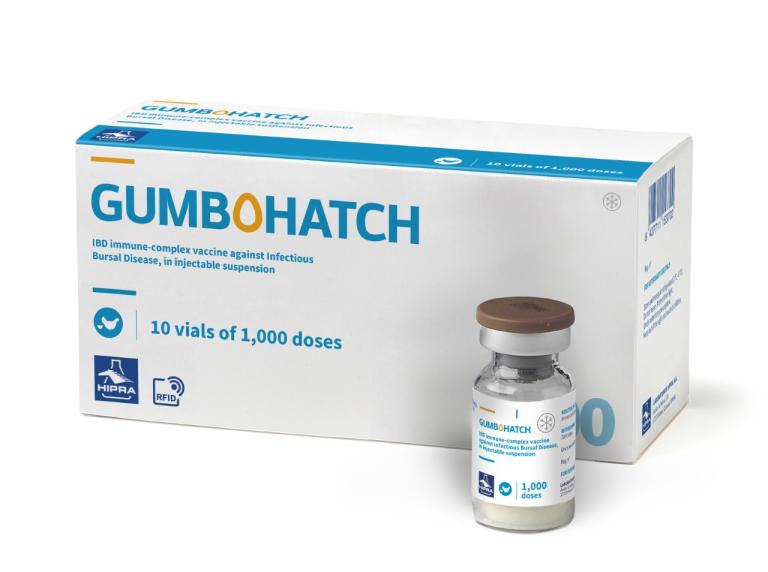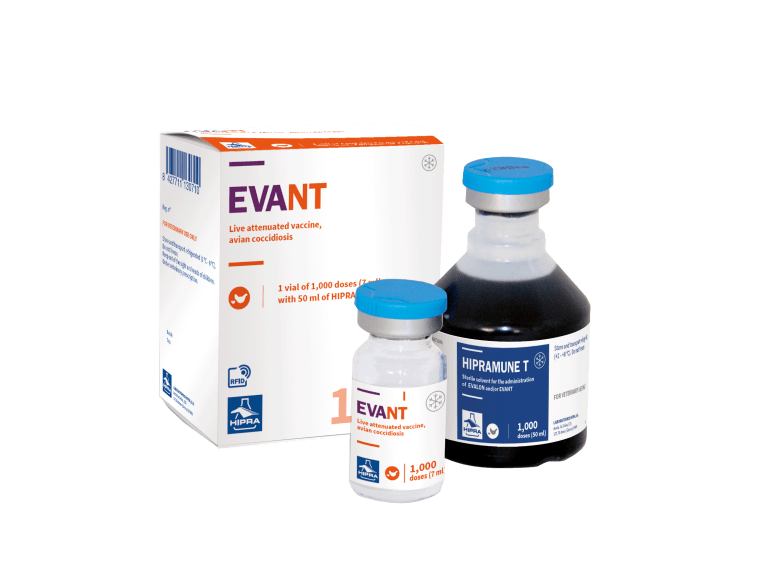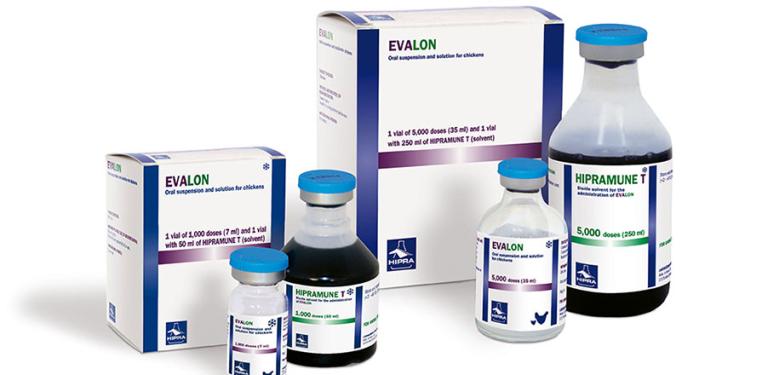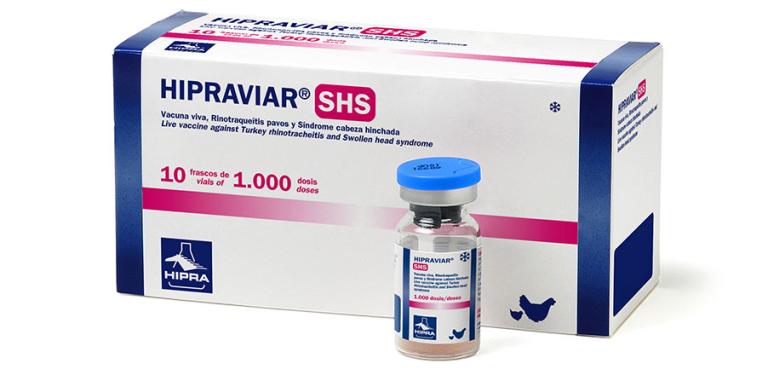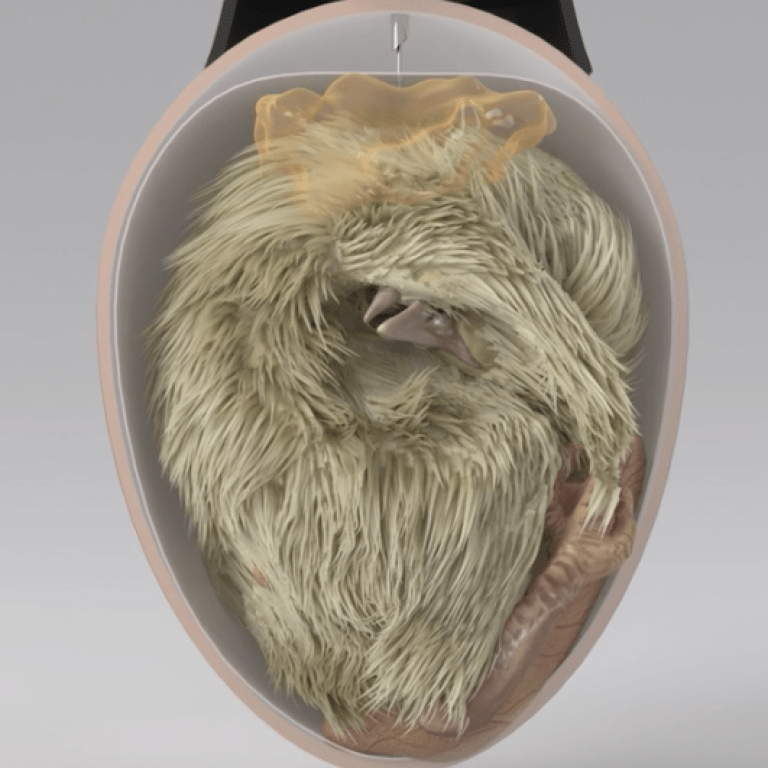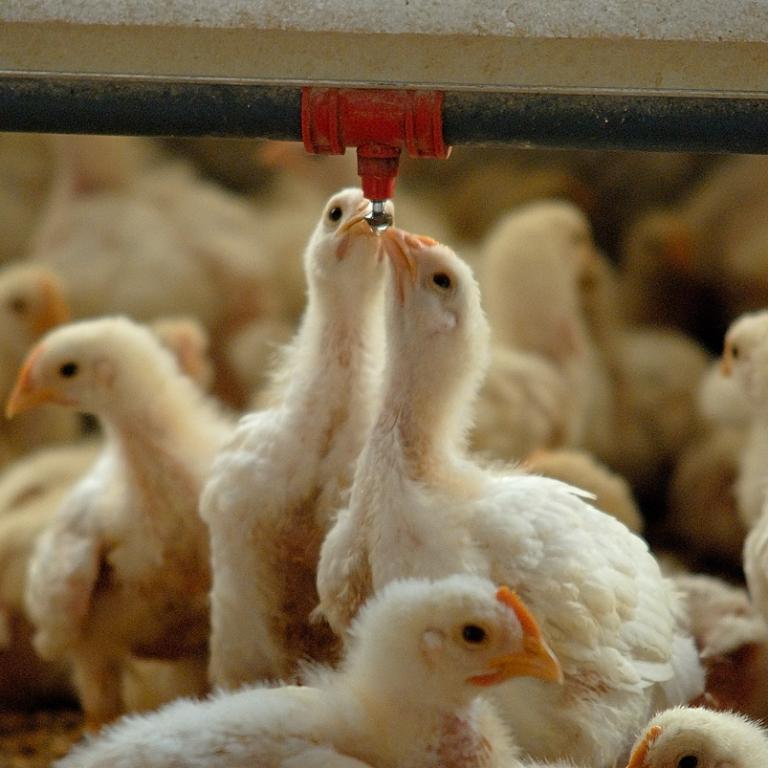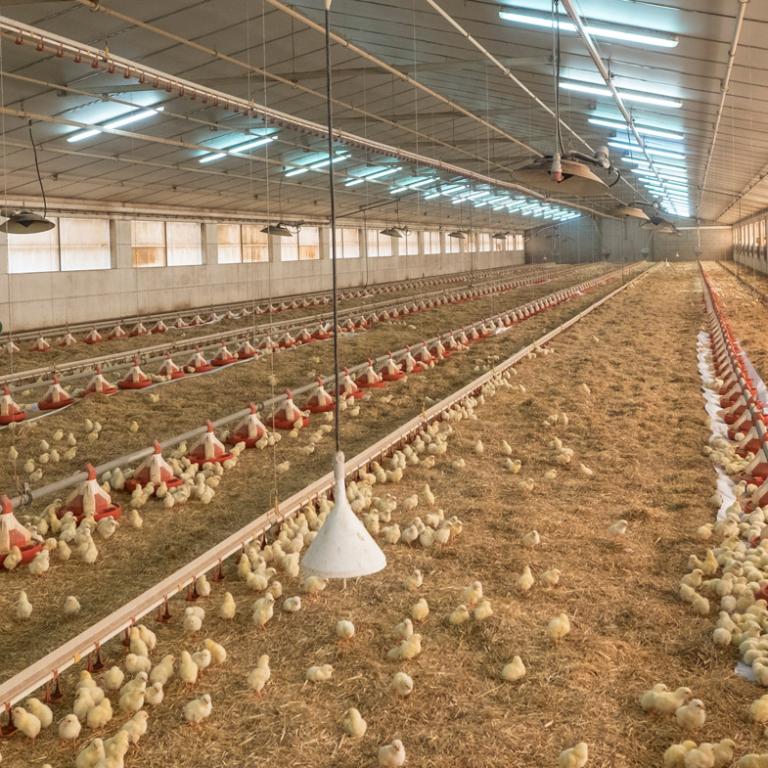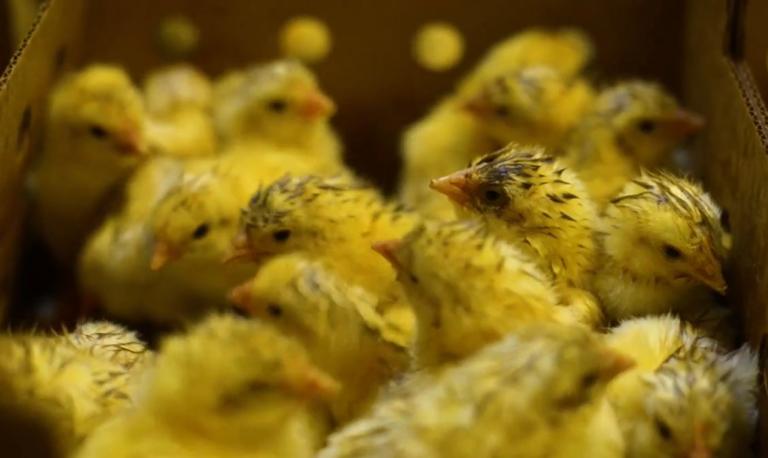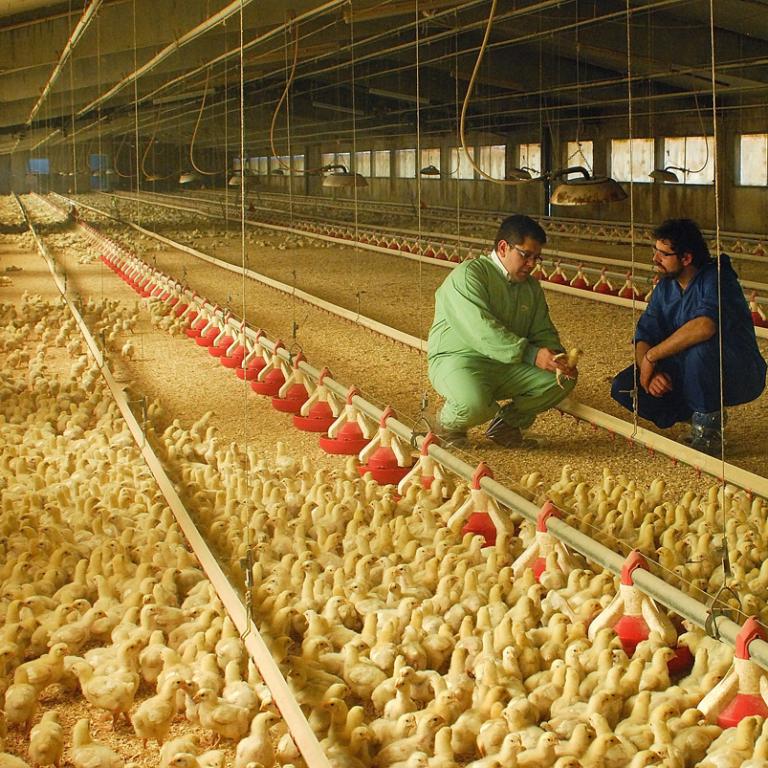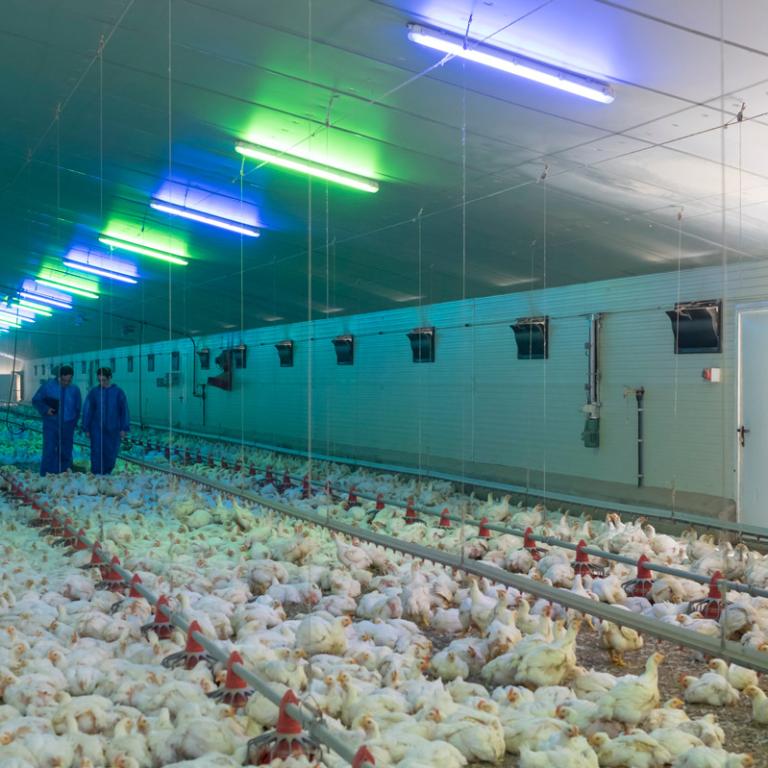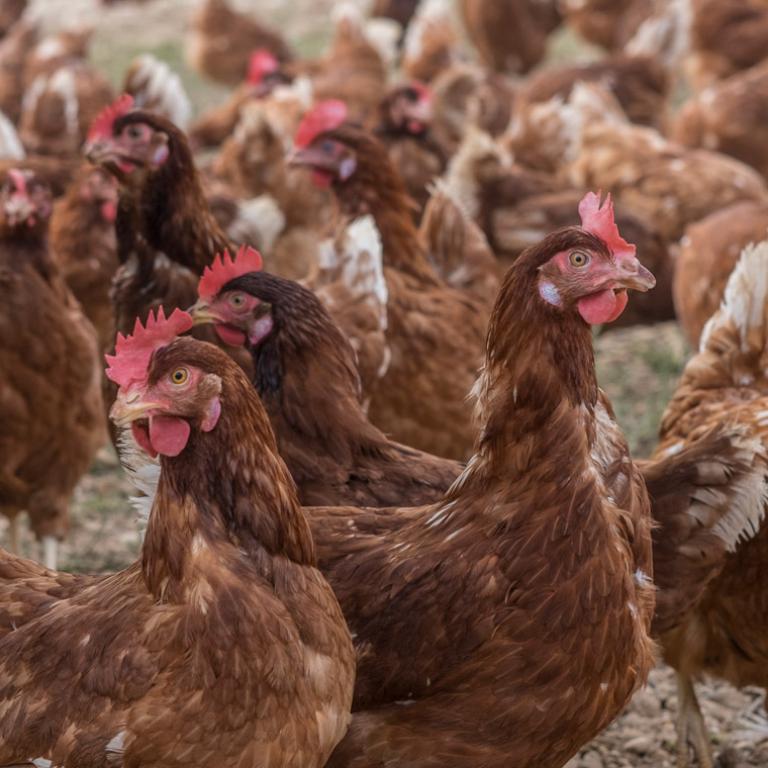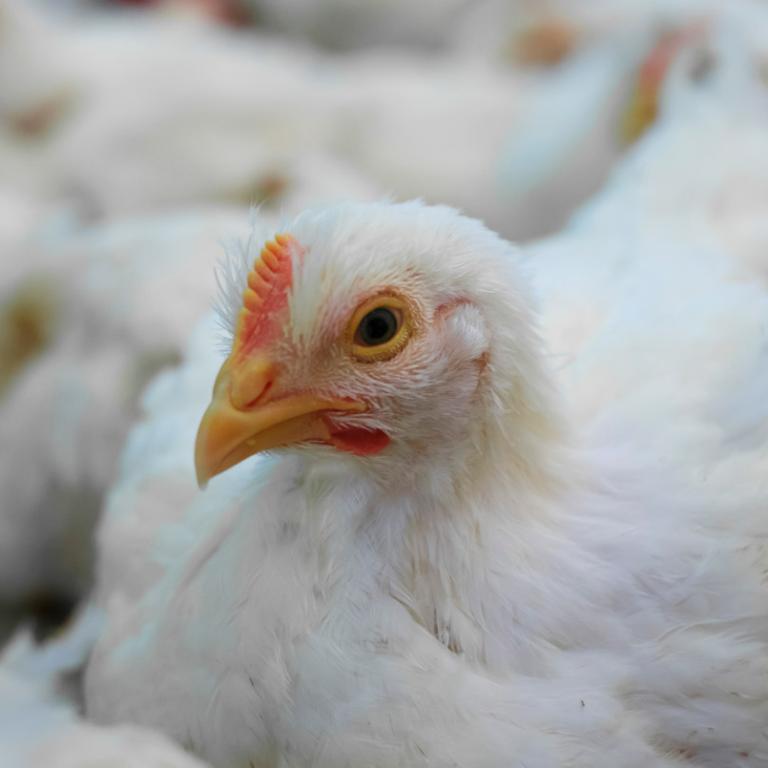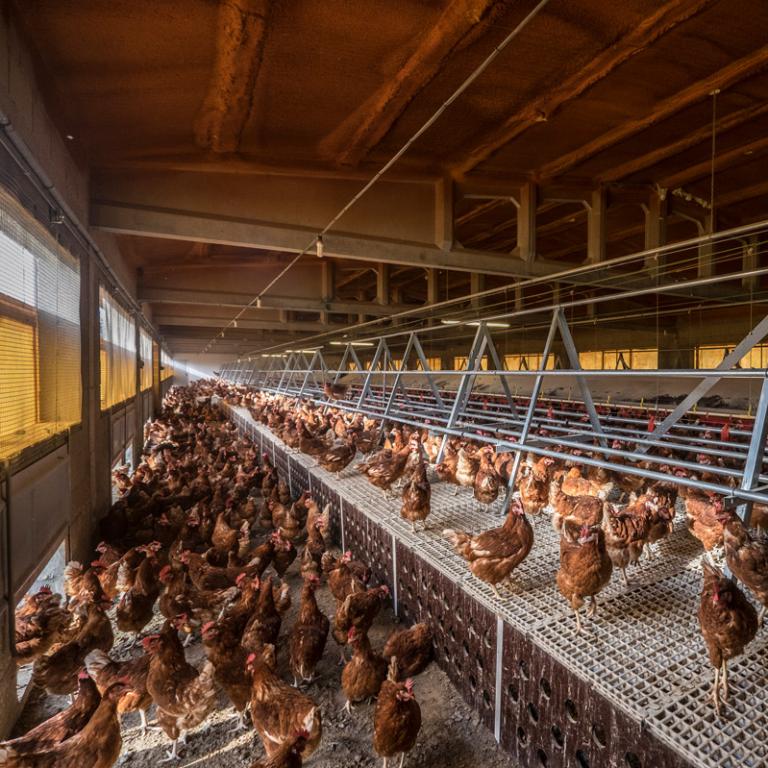AETIOLOGY:
Avibacterium paragallinarum, A, B, and C serotypes.
TRANSMISSION:
- Direct: by nasal exudates.
- Indirect: by contaminated water troughs and feeders. Introduction of the disease to a farm by replacement birds frequently occurs.
CLINICAL SIGNS:
- Respiratory: facial oedema, elimination of nasal and ocular exudates. Sharp drop in feed consumption and in laying.
LESIONS:
Sinusitis, rhinitis, conjunctivitis.
DIAGNOS:
- Causal agent identification: Microorganism isolation from exudates or infraorbital breast swabs, PCR.
TREATMENT, PREVENTION AND CONTROL:
Treatment with chemotherapies in the acute phase helps to control mortality, dissemination of the disease and productive losses, but it shows a limited efficacy in the chronic phase. Vaccination with inactivated vaccines that contain the three serotypes is the most widespread and efficient strategy. For control to be effective, good biosecurity measures must be maintained; avoid farms with multi-age systems and control the replacement of birds.


